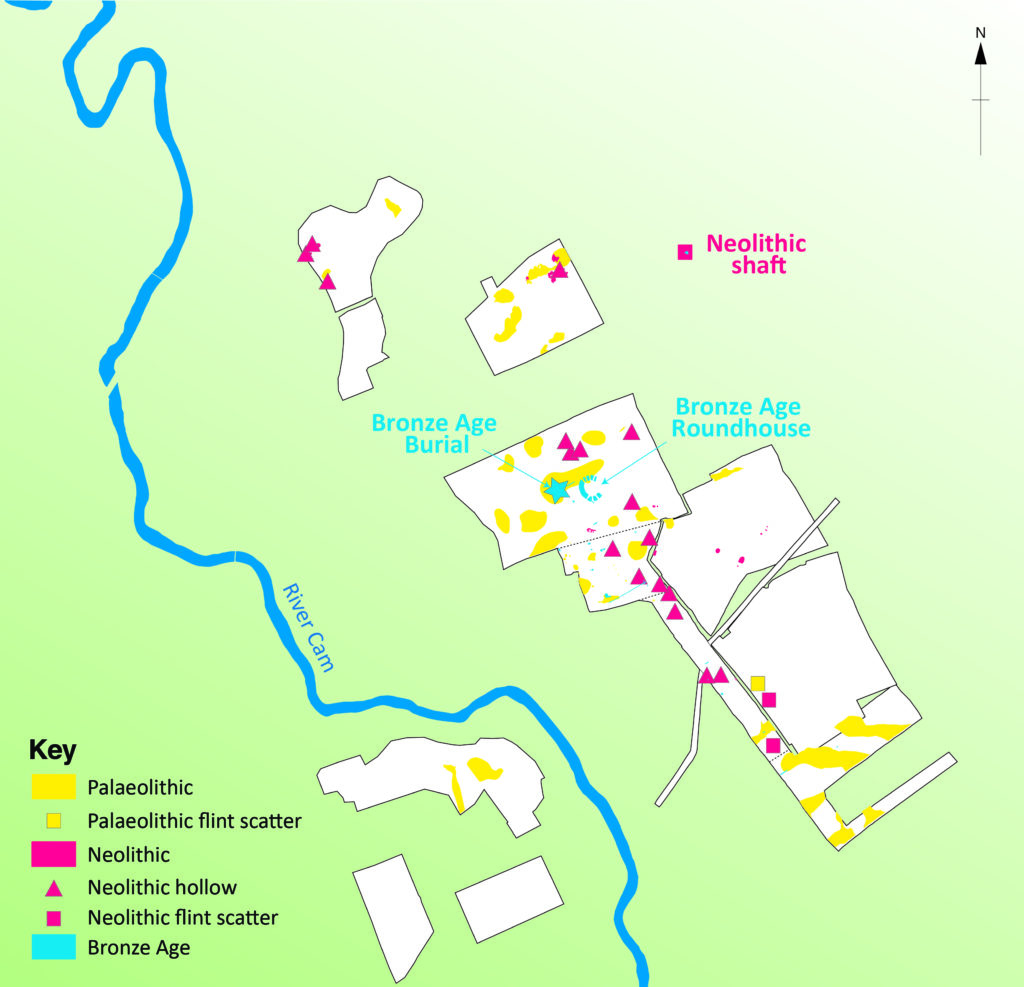A Settled Land
Graphic | Hidden Lives: a story of discovery
Archaeological evidence indicates the land began to be cleared of woodland about 4,000 years ago. This suggests people were becoming more settled and establishing communities. A key find from the Bronze Age is a human burial, placed in one of the natural ponds that were a feature of the landscape. The style of the burial is useful in understanding the beliefs and practices of Bronze Age people.
Other Bronze Age artefacts help us to build a bigger picture of the time. The period is named for the advance of making bronze alloy from copper and tin but it is pottery fragments (known as sherds) that have been discovered at Hinxton. Bell Beaker pottery was common across much of Western Europe during the Bronze Age, and recognisable sherds were found at the campus. These help to date the site but they also help us to consider what patterns of trade and migration there might have been.
